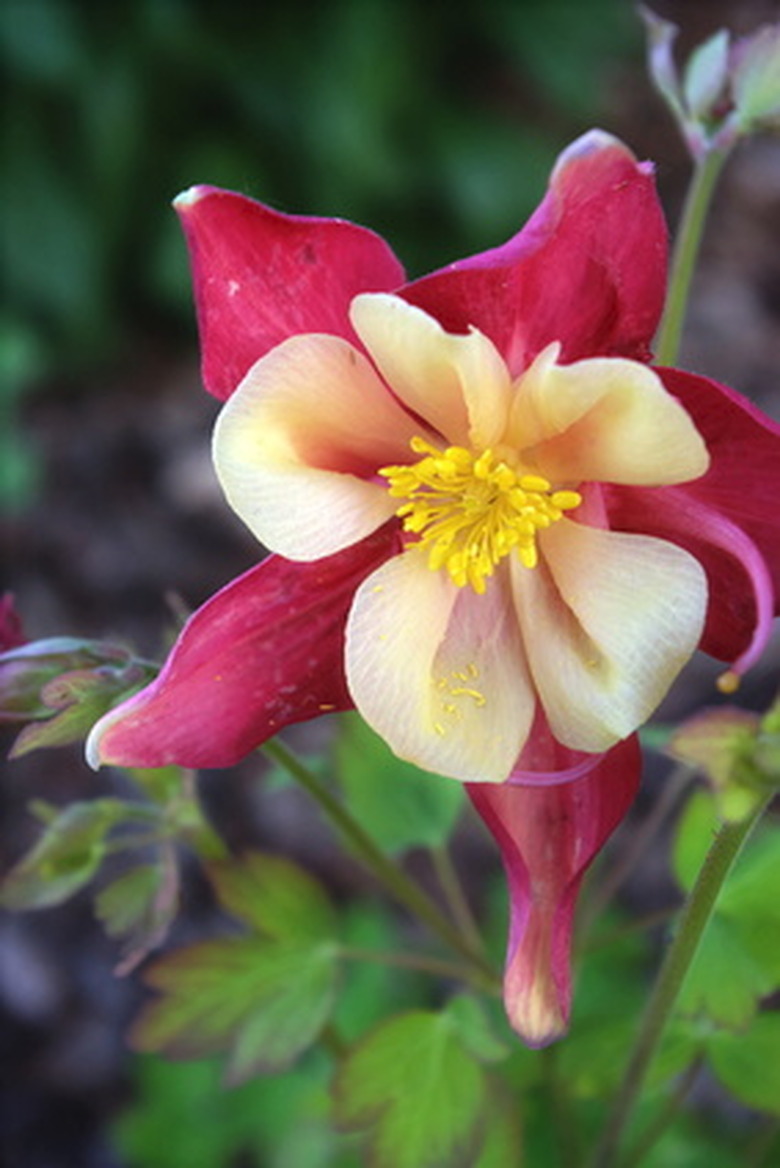Native Plants Of Massachusetts
Massachusetts is home a variety of plants, from low-growing ground covers to tall shade trees. Shrubs and wildflowers grow in the uplands, meadows and woodlands throughout much of the state, while wetland plants grow in the coastal areas. These low-maintenance native plants produce colorful blooms and foliage that attract beneficial insects, birds and other wildlife to the garden.
Eastern Red Columbine
Eastern red columbine, or Aquilegia canadensis, grows up to 2 feet tall. This upright, branching perennial bears bluish green foliage and drooping red and yellow flowers with long yellow stamens. Eastern red columbine grows wild in shaded woodlands and prefers partial to full shade. Planting this columbine in full sun may cause stunted growth and scorching of leaves. Plant eastern red columbine in sandy, poor, well-drained soil. Rich soil often causes weak stems and a shorter life for the plant. Cut back after blooming to improve the appearance of the plant and water regularly during the first month.
- Massachusetts is home a variety of plants, from low-growing ground covers to tall shade trees.
Marshmallow Hibiscus
The shrubby perennial known as marshmallow hibiscus or, Hibiscus moscheutos, grows wild in meadows and marshes. It reaches up to 8 feet tall and features heart-shaped, grayish green leaves. In midsummer, large, 5-petaled white flowers with red centers and masses of yellow stamens bloom along the tall stalks. Attractive seed heads follow the flowers. Plant marshmallow hibiscus in full sun or partial shade and wet to moist, alkaline soil. Remove spent blooms to improve the appearance.
Tulip Tree
The tall, straight trunk of the tulip tree grows quickly, reaching up to 150 feet tall. Also known as Liriodendron tulipifera, this deciduous tree attracts hummingbirds with greenish yellow, tulip-like flowers that bloom at the top of the tree. The star-shaped, bluish green foliage turns yellow in the fall and seed heads persist after flowering. Native to moist woods and stream banks, this tree prefers moist soil and does not tolerate drought or compacted soil. Plant tulip tree in sun or shade and rich, acidic soil with a pH of 5.5 to 6.5. Water both young and established trees deeply once a week, during dry periods. If not provided with enough water, the leaves may drop from the tree.
- The shrubby perennial known as marshmallow hibiscus or, Hibiscus moscheutos, grows wild in meadows and marshes.
- The star-shaped, bluish green foliage turns yellow in the fall and seed heads persist after flowering.
Partridgeberry
The trailing evergreen known as partridgeberry, or Mitchella repens, grows only 2 inches tall. Fragrant, white, trumpet-shaped flowers bloom between pairs of small, round leaves. Birds and other wildlife enjoy the small, red berries. Found in the wild, in woodlands and along stream banks, the partridgeberry enjoys partial to full shade and moist, acidic soil. This perennial works well in woodland gardens as a ground cover under shrubs and trees. Wilting of the leaves signals drought stress and the plant requires water.
Mountain Laurel
Kalmia latifolia, commonly known as mountain laurel, features dense, spreading branches and oval, glossy leaves. This evergreen shrub grows between 12 and 20 feet tall. Clusters of pink, bell-shaped flowers with deep pink centers bloom in the summer. It grows wild in woodlands and meadows and prefers partial shade and cool, moist soil. All parts of mountain laurel are poisonous and should never be eaten.
- The trailing evergreen known as partridgeberry, or Mitchella repens, grows only 2 inches tall.
- This perennial works well in woodland gardens as a ground cover under shrubs and trees.
References
- Lady Bird Johnson Wildflower Center: Massachusetts Recommended
- "New England Gardener's Guide"; Jacqueline Hériteau and Holly Hunter Stonehill; 2003
